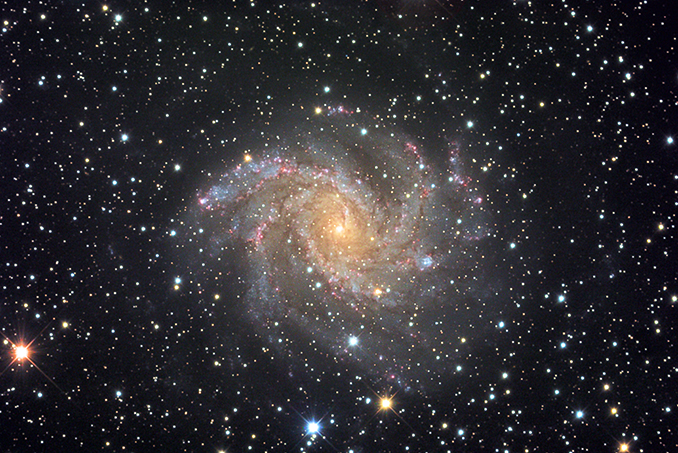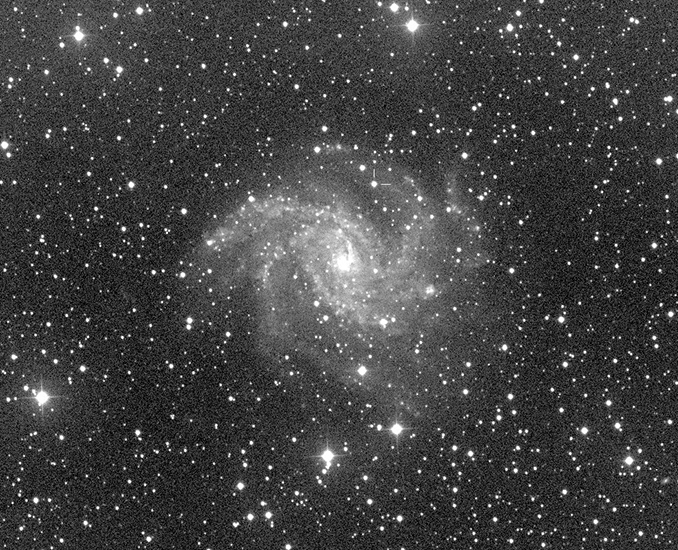
NGC 6946 is a marvellously handsome-looking galaxy, with its enticing ‘pinwheel’ spiral structure set in a star-sparkling field for those imagers looking for the prettiest of pictures. Yet, it’s also of supreme interest to science-seeking amateurs and professional astronomers alike, with its extraordinary propensity to yield exploding stars. This has led to its very apt nickname of ‘The Fireworks Galaxy’!

How to observe
NGC 6946, also catalogued as Caldwell 12, is an intermediate spiral galaxy (it has the classification SAB(rs)cd, under the Hubble/de Vaucouleurs system) straddling the boundary between the constellations of Cygnus and Cepheus. On August nights it’s splendidly placed for observation across the UK, lying almost at the zenith at midnight BST mid-month, from London.
It’s not an easy galaxy to find as its immediate locale is not brimming with bright stars. Try starting from magnitude +2.5 Alderamin (alpha [α] Cephei) and then locate eta (η, magnitude +3.4) Cephei four degrees to the south-west; NGC 6946 lies a further two degrees in the same direction. NGC 6946 is one of the closest ‘giant’ spiral galaxies beyond our Local Group (it lies about 22 million light years away), so it has a reasonably bright catalogued magnitude of +8.9. However, being a spiral galaxy that’s orientated face-on to our perspective, it’s afflicted by a notoriously low surface brightness across its substantial 11 × 10 arcminute form, which makes it a tough target for smaller-aperture telescopes.

Deep amateur images routinely show glittering H-II regions and young star clusters, testament to a high level of ongoing star formation. This may be one reason why NGC 6946 is extraordinarily prolific at producing supernovae; ten (designated 1917A, 1939C, 1948B, 1968D, 1969P, 1980K, 2002hh, 2004et, 2008S and 2017eaw) have been observed over the past 100 years or so!
NGC 6946 should be captured visually through a 150mm (six-inch) telescope on a fine night at a dark-sky location, but don’t expect to see more than a uniformly-lit diffuse and faint halo. A 400mm (16-inch) aperture may reveal some of the H-II regions that liberally dot the galaxy’s multiple spiral arms.
Once you’ve had your fill of the galaxy, there’s a nice bonus awaiting as the welcoming open cluster NGC 6939 lies just over half a degree away to the north-west. It’s a much easier visual proposition and a fine sight through any telescope. Shining with an integrated magnitude of +7.8 as a result of the combined light of perhaps 120-140 stars crammed into an apparent diameter of 8’, NGC 6939 is visible in finderscopes on a good night. NGC 6946 and NGC 6939 pair make a great target for wide-field imagers.




